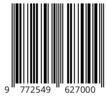Kohesi Gramatikal dalam Skripsi Mahasiswa STKIP Muhammadiyah Sungai Penuh
Abstract
Keywords
Full Text:
PDFReferences
Aflahah. (2012). “Kohesi dan Koherensi dalam Wacana”. (Jurnal Okara Vol. 1 No. 7). http://download.portalgaruda.org/article. Diunduh pada tanggal 9 Februari 2018.
Aidinlou, N.A., Khodmard, N., Azami, J. (2012) “The Effect of Textual Cohesive Reference Instruction on the Reading Comprehension of Iranian EFL Students” (Journal of English Linguistics Vol. 2 No. 5). http://dx.doi.org/10.5539/ijel.v2n5p18. Diunduh pada tanggal 3 Maret 2018.
Aziz, A.W. (2015). “Pemarkah Kohesi Leksikal dan Kohesi Gramatikal: Analisis pada Paragraf dalam Skripsi Mahasiswa Pend. Bahasa dan Sastra Indonesia”. (Jurnal Dialektika Vol. 1 No. 1). http://dialektika.scienceontheweb.net/index.php/DIA/. Diunduh pada tanggal 9 Februari 2018.
Baryadi, P. (2002). Dasar-Dasar Analisis Wacana dalam Ilmu Bahasa. Yogyakarta: Pustaka Gondho Suli.
Bahaziq, A. (2016). “Cohesive Devices in Written Discourse: A Discourse Analysis of a Student’s Essay Writing”. (Journal of English Language Teaching Vol. 9 No. 7). http://dx.doi.org/10.5539/elt.v9n7p112. Diunduh pada tanggal 21 Februari 2018.
Brown, G. & Yule, G. (1996). Analisis Wacana. (Diterjemahkan Oleh I. Soetikno). Jakarta: Gramedia Pustaka Utama.
Castro, C.D. (2004). “Cohesion and Social Contruction of Meaning in the Essay of Filipino College Students Writing in L2 English”. (Journal of Asia Pacific Education Review Vol. 5 No. 2). http://eri.snu.ac.kr/aper. Diunduh pada tanggal 14 Maret 2018.
Crossley, S.A. & McNamara, D.S. (2016). “Say More and Be More Coherent: How Text Elaboration and Cohesion Can Increase Writing Quality”. (Journal of Writing Research Vol. 7 No. 3). http://dx.doi.org/10.17239/jowr-2016.07.3.02. Diunduh pada tanggal 21 Februari 2018.
Darweesh, A.D. & Kadhim, A.H. (2016) “Iraqi EFL Learners’ Problems in Using Conjunctions as Cohesive Devices” (Journal of Education and Practice Vol. 7 No.11). www.iiste.org. Diunduh pada tanggal 14 Maret 2018.
Gafiyatova, E.V., Korovina, I.V., Solnyshkina, M.I., Yarmakeev, I.E. (2017). “Deictic Elements as Means of Text Cohesion and Coherence in Academic Discours”. (Journal of Social Studies Education Research Vol. 8 No. 3). http://jsser.org Diunduh pada tanggal 20 Februari 2018.
Hanafiah, W. (2014). “Analisis Kohesi dan Koherensi pada Wacana Buletin Jumat”. (Jurnal Epigram Vol. 11 No. 2). http://jurnal.pnj.ac.id/index.php/epigram/article/. Diunduh pada tanggal 20 Februari 2018.
Kwan, Lisa S.L. & Yunus, M.Md. (2014). “Cohesive Errors in Writing among ESL Pre-Service Teachers”. (Journal of English Language Teaching Vol. 7 No. 11). http://dx.doi.org/10.5539/elt.v7n11p130. Diunduh pada tanggal 20 Februari 2018.
Murtono. (2014). Menuju Kemahiran Berbahasa Indonesia. Surakarta: UNS Press.
Plakans, L. (2016). “Cohesion features in ESL reading: Comparing beginning, intermediate and advanced textbooks”. (Journal of Reading in a Foreign Language Vol. 28 No. 1). http://nflrc.hawaii.edu/frl. Diunduh pada tanggal 20 Februari 2018.
Sarwono, J. (2006). Metode Penelitian Kuantitatif dan Kualitatif. Yogyakarta: Graha Ilmu.
Sumarlam. (2010). Analisis Wacana Tekstual dan Kontekstual. Surakarta: Pustaka Cakra Surakarta.
Trisnaningrum, Y., Alek, A., & Hidayat, D.N. (2019). Discourse Analysis of Grammatical Cohesion Devices in College Students’ Academic Writing Essay. (Indonesian Journal of English Education Vol.6 No.1). http://journal.uinjkt.ac.id/index.php/ijee/article/view/12502. Diunduh pada tanggal 20 November 2021.
Wiyanti, E. (2016). “Kajian Kohesi Gramatikal Substitusi dan Elipsis dalam Novel “Laskar Pelangi” Karya Andrea Hirata”. (Jurnal Pendidikan Bahasa dan Sastra Vol. 16 No. 2). http://dx.doi.org/10.17509. Diunduh pada tanggal 20 Februari 2018.
Wiyanti, E. & Dinihari, Y. (2017). “Analisis Kohesi Anafora dan Katafora pada Tajuk Rencana Koran Kompas”. (Jurnal Bahastra Vol. 37 No. 1). http://journal.uad.ac.id/index.php/BAHASTRA/article/view/6299. Diunduh pada tanggal 20 Februari 2018.
DOI: https://doi.org/10.31002/transformatika.v6i2.4935
Refbacks
- There are currently no refbacks.
Copyright (c) 2023 Anggia Puteri

This work is licensed under a Creative Commons Attribution-ShareAlike 4.0 International License.


_(2)_.png)
.png)
_.png)
.png)
.png)















